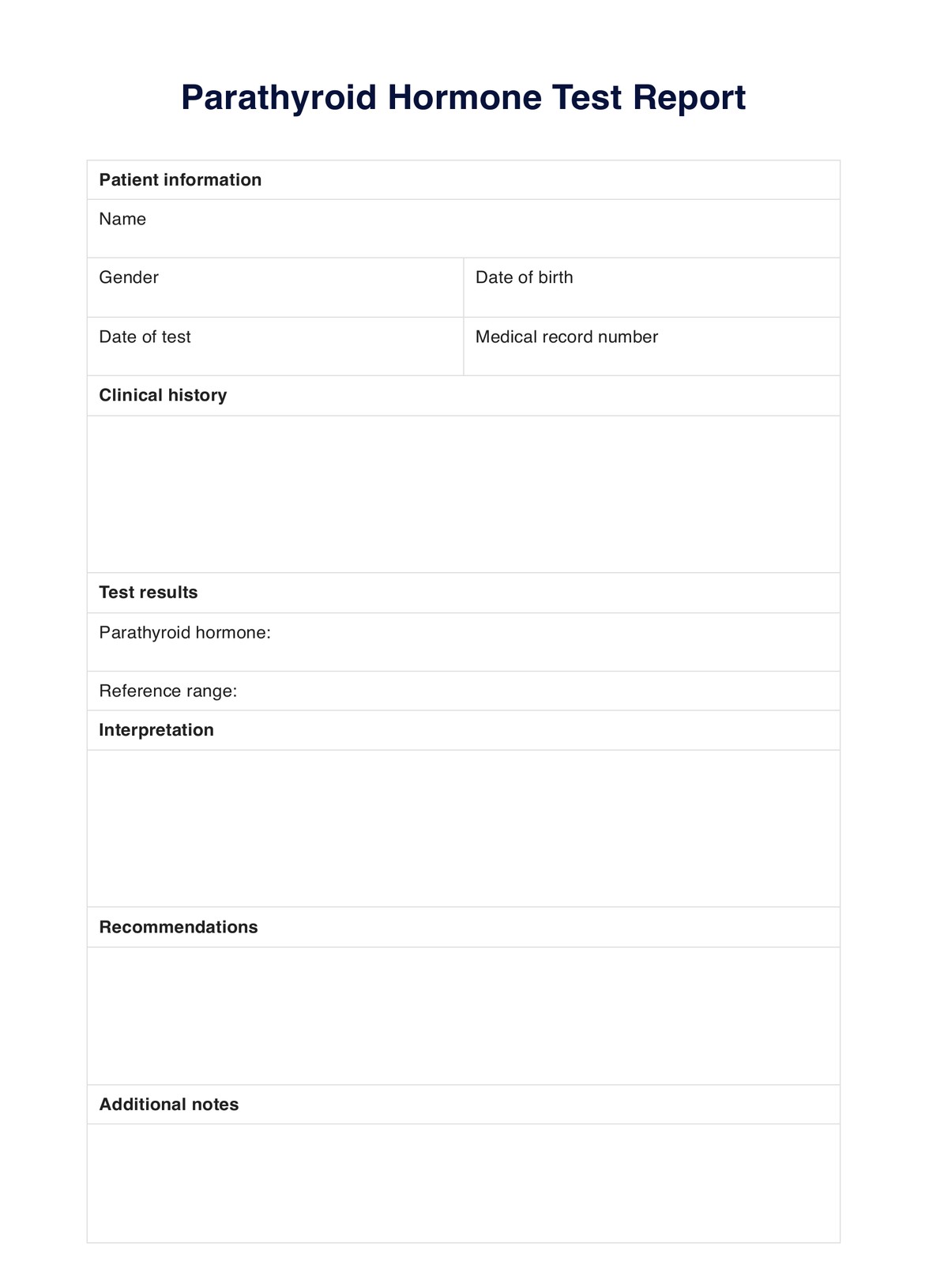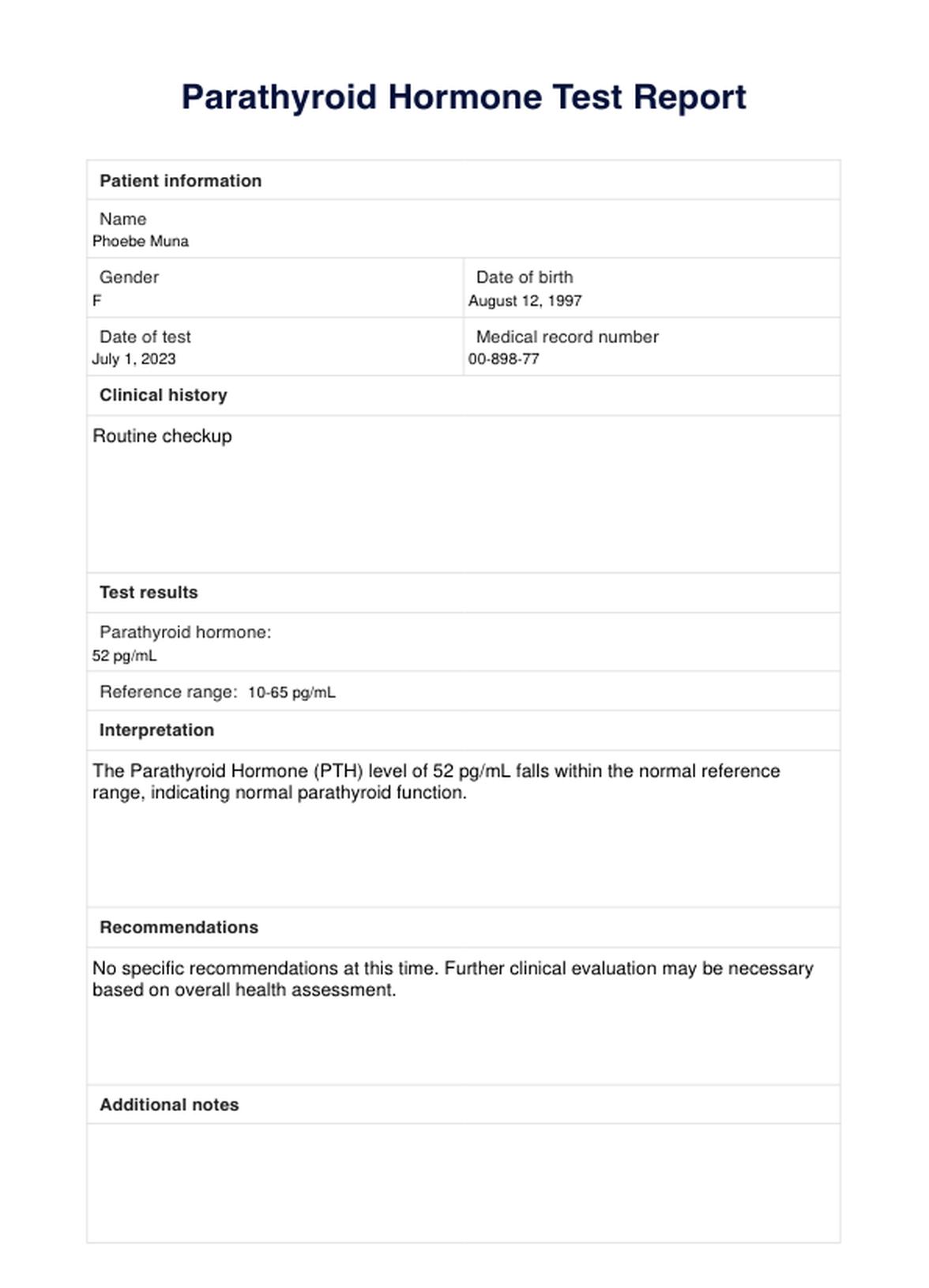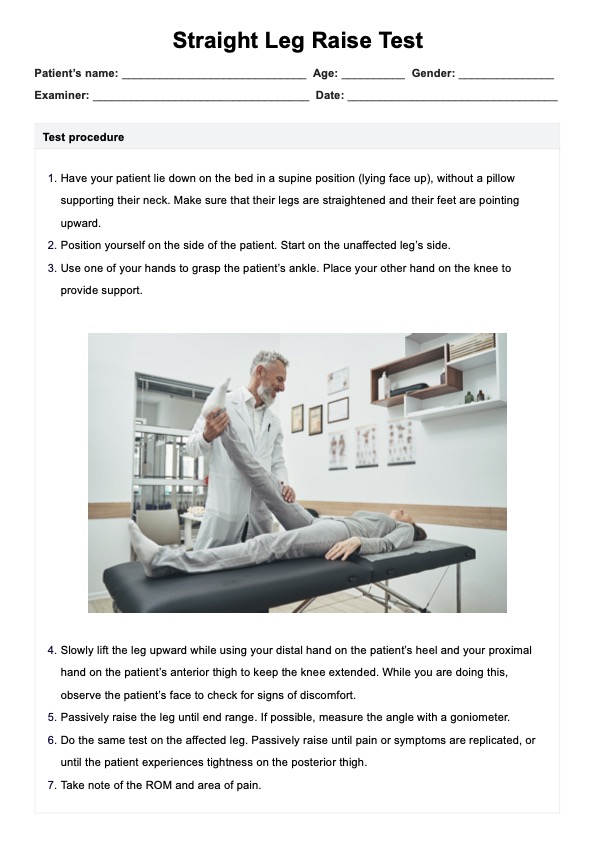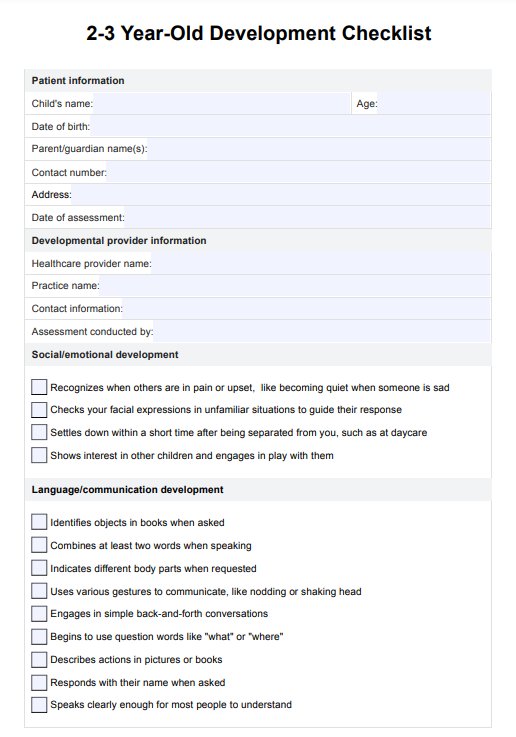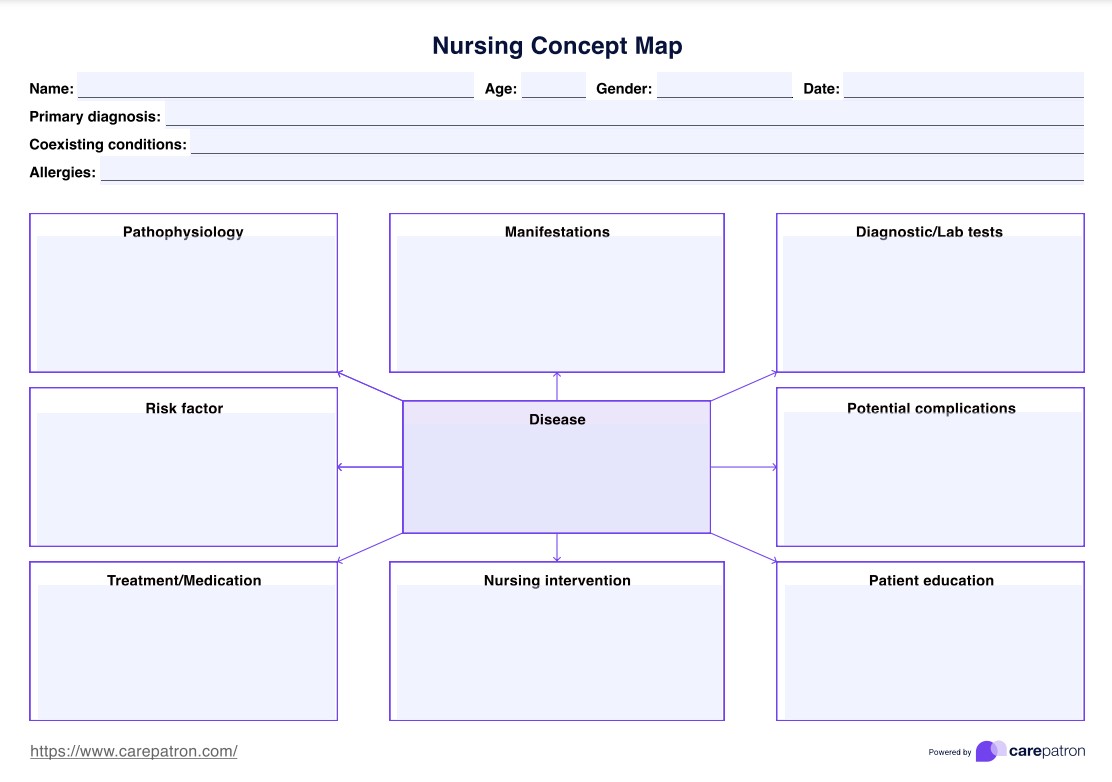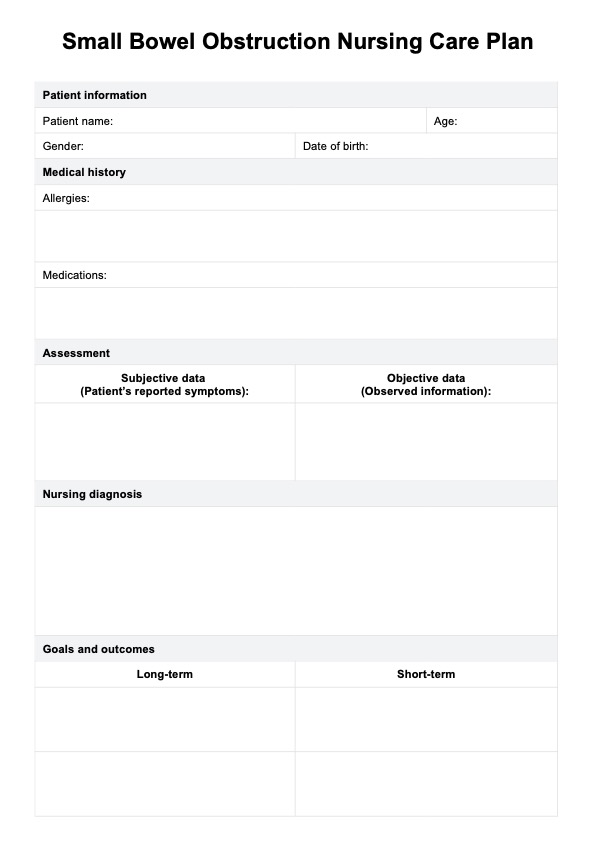Parathyroid Hormone Test Reports
Download a free Parathyroid Hormone Test Report template and easily document your patient's results. Get the PDF template and example now.


What is a Parathyroid Hormone Test?
Parathyroid hormone (PTH) is a crucial hormone produced by the parathyroid glands, four small glands in the neck behind the thyroid. This hormone plays a pivotal role in regulating and maintaining the balance of two critical minerals in the body: calcium and phosphate. By influencing the levels of these minerals, PTH indirectly controls the strength and structure of our bones, normal nerve function, and muscle contraction.
A Parathyroid Hormone Test, also known as a PTH test, measures parathyroid hormone levels in an individual's blood. This test is vital in diagnosing and monitoring conditions related to the parathyroid glands, such as hyperparathyroidism or hypoparathyroidism. It can also be used to evaluate calcium levels in the body and detect potential bone disorders.
During the test, a healthcare professional will draw a blood sample from the individual's arm and send it to a laboratory for analysis. The results are usually available within a day or two, and they are expressed in picograms per milliliter (pg/mL) or nanograms per liter (ng/L) and recorded in a Parathyroid Hormone Test Report.
By monitoring PTH levels, doctors can determine if the parathyroid glands are functioning normally or if there is an imbalance in calcium and phosphate levels. Abnormalities in PTH levels may indicate a potential health issue that requires further investigation and treatment.
Parathyroid Hormone Test Reports Template
Parathyroid Hormone Test Reports Example
How does it work?
Our printable Parathyroid Hormone Test Report template makes recording and tracking your patient's test results easy. Follow these steps to get started:
Step One: Access the free template
Download the Parathyroid Hormone Test Report using the link on this page or the Carepatron app. You may also obtain a copy from our resources library.
Step Two: Input patient details
Fill in the necessary information, including the patient's name, date of birth, and medical record number. For added convenience, you can save a digital copy of this template in your patient’s electronic health records to access it easily.
You can use the Medical Record Template to systematically document and track patient information, ensuring comprehensive and organized records.
Step Three: Record the test results
Fill in the parathyroid hormone level. This value can typically be found on the lab report provided by the testing facility.
Step Four: Interpret the results
Compare the recorded parathyroid hormone level to established reference ranges and guidelines. This will help determine if further evaluation or treatment is necessary.
Step Five: Provide recommendations
Based on the test results, provide your patient with actionable steps they can take to manage their calcium metabolism and bone health. This may include dietary changes, supplements, or additional medical assessments.
When would you use this test report?
You can use the Parathyroid Hormone Test Report template for patients experiencing symptoms of hyperparathyroidism or hypoparathyroidism. These may include bone pain, muscle weakness, excessive urination, and kidney stones. You can also use this template to:
Track a patient's parathyroid hormone levels over time
Our Parathyroid Hormone Test Report template allows you to record and compare multiple test results over time. This can help monitor the effectiveness of treatments or changes in the patient's condition.
Create a clear and thorough report for your patient
This test report can also educate and raise awareness for patients about their parathyroid hormone levels and their impact on bone health. By providing precise, easy-to-understand data, you can help patients take control of their health and make informed decisions.
Communicate with other healthcare professionals
You can use this template to share test results and recommendations with other healthcare professionals in your patient's care. This promotes collaborative care and ensures all providers have access to important information.
Keep a record for future medical references
A comprehensive record of a patient's parathyroid hormone levels can be helpful for future medical references. This can help diagnose and treat any potentially related conditions or monitor the progression of an existing disease.
What do the results mean?
A Parathyroid Hormone Test measures the parathyroid hormone concentration in your patient's blood. The results are typically reported in picograms per milliliter (pg/mL) or picomoles per liter (pmol/L). Both units are equivalent and measure the same thing, so checking which unit your lab uses for consistency is essential.
Normal levels
Generally, a normal PTH level is 10 to 55 picograms per milliliter (pg/mL) or 1.06 to 5.84 picomoles per liter (pmol/L). If the patient's levels fall within this range, it typically indicates healthy parathyroid function.
High PTH levels
Higher than normal levels may suggest hyperparathyroidism, kidney failure, or vitamin D deficiency. These conditions can lead to excessive calcium in the blood, impacting bone health.
Low PTH levels
Levels lower than the standard range could indicate hyperparathyroidism, vitamin D toxicity, or excessive calcium intake. These conditions can lead to low blood calcium levels, affecting muscle and nerve functions.
Assessing these results in the context of your patient's overall health and any symptoms they may be experiencing is essential. Further evaluation and potential treatments may be necessary based on the test findings.
Commonly asked questions
Endocrinologists, nephrologists, and other healthcare providers often order a Parathyroid Hormone Test to evaluate calcium metabolism and related conditions.
Parathyroid Hormone Tests are used to assess calcium metabolism and bone health. They may be ordered as part of a routine health check to investigate symptoms like muscle weakness or bone pain or to monitor the effectiveness of treatments for conditions like hyperparathyroidism or hyperparathyroidism.
The test typically takes a few minutes and involves drawing a blood sample. The results can take a few hours or days, depending on the laboratory used.


